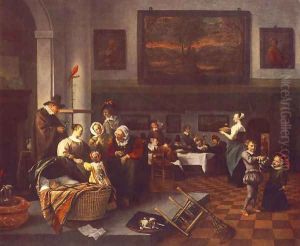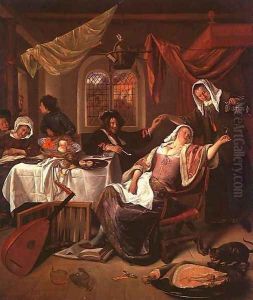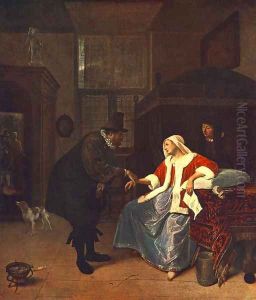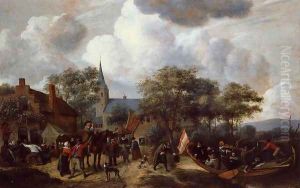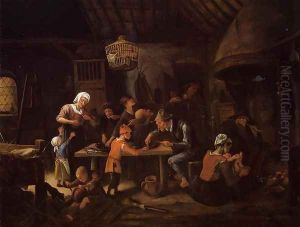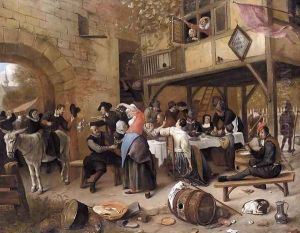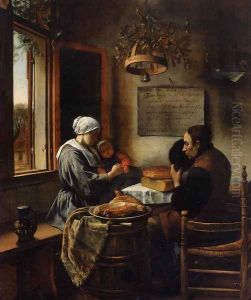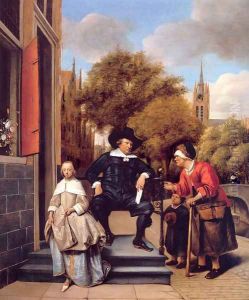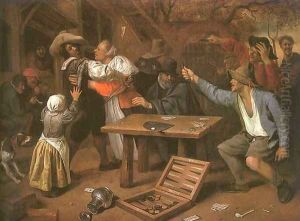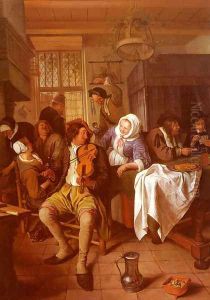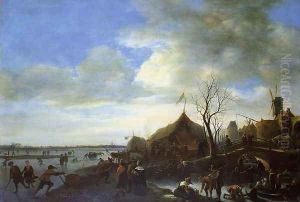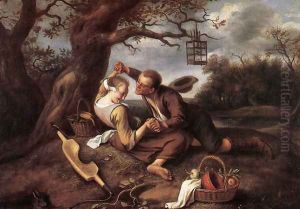Jan Steen Paintings
Jan Steen was a Dutch genre painter of the 17th century, also known as the Dutch Golden Age. He is best known for his richly detailed and often humorous depictions of the everyday life of the lower and middle classes. Born in Leiden, Netherlands, in 1626, Steen was the son of a wealthy Catholic merchant and grew up in an environment filled with art and culture.
Steen’s work was influenced by his predecessors in Dutch painting, including the likes of Adriaen Brouwer and Adriaen van Ostade, but he is particularly noted for his unique approach to genre scenes. He often included himself and members of his family as characters in his paintings, which were known for their lively and chaotic energy, a stark contrast to the more subdued and orderly works of some of his contemporaries.
Jan Steen studied under the German painter Nicolaus Knüpfer in Utrecht, who was known for his historical paintings and had a significant impact on Steen’s style. Later, Steen also became a student of Adriaen van Ostade in Haarlem, which helped him refine his skills in depicting everyday life. Steen's paintings were not only entertaining but also contained moral lessons, as he often depicted the consequences of human folly.
Despite his artistic talent, Steen's life was marked by financial instability. He ran a brewery and tavern to supplement his income from painting, but he was not a successful businessman. This aspect of his life was often mythologized as the embodiment of the phrase 'to lead a life like Jan Steen's', which in Dutch implies living a life full of disorder and frivolity.
Jan Steen's body of work includes over 800 paintings, though not all are authenticated. He was prolific, and his works have been widely collected and admired for their narrative quality and technical skill. Steen died in 1679 in Leiden and left behind a legacy that has cemented him as one of the most beloved Dutch painters, with works displayed in major museums around the world.

